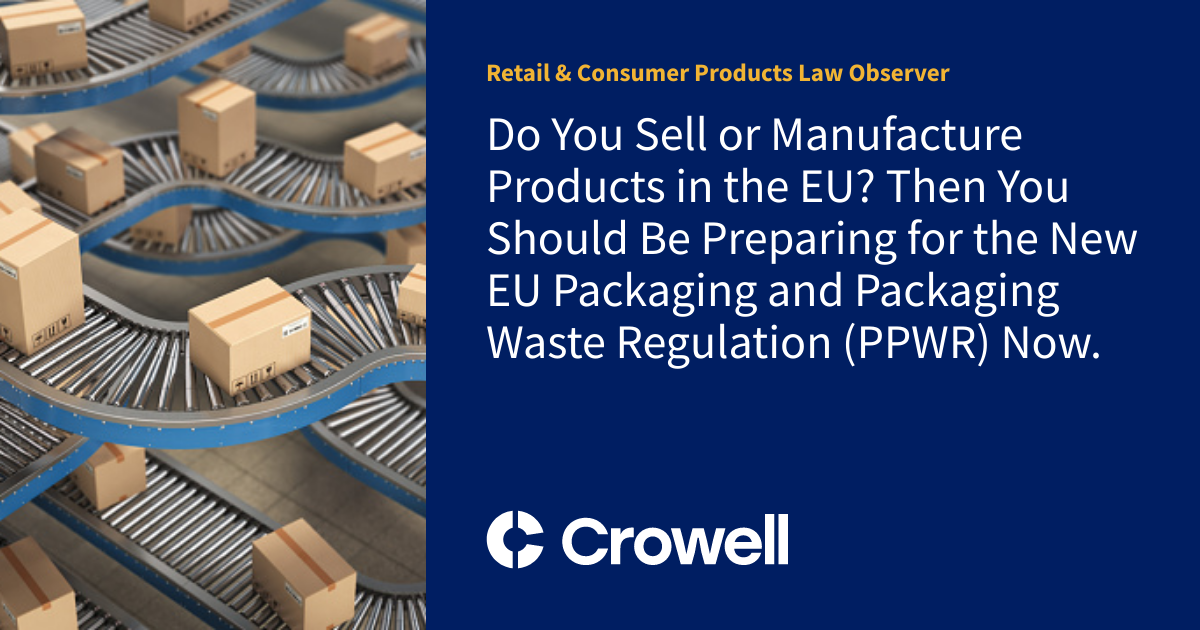As we approach the end of 2024 or the beginning of 2025, the hot topic in the European Union’s legislative sphere is the impending introduction of the new Packaging and Packaging Waste Regulation (PPWR). Expected to be adopted within the aforementioned time frame, the PPWR presents several complicated legal targets and requirements that industry must strive to meet–a challenge that could potentially be prohibitive due to steep deadlines.
Companies across the EU can ill afford to ignore the PPWR, as it poses significant risks such as supply-chain disruption, hefty penalties, and the potential for litigation. Therefore, it is of paramount importance that organisations begin to prepare for the regulation today.
The PPWR is an all-new EU regulation that is poised to supersede the previous Packaging and Packaging Waste Directive. Its primary aim is to optimise the objectives detailed in the European Green Deal, the Circular Economy Action Plan, and the Plastics Strategy. The legislation will regulate packaging and certain packaging-related products within Europe, including consumer packaging, industrial materials, transport items, and other packaging products such as pallets and crates.
Proponents of the PPWR purport that its focus is twofold: to ensure that packaging products within the EU are both safe and sustainable. Consequently, packaging products will not be allowed on the EU market unless they adhere to the sustainability, labelling, and other stipulations set out in the PPWR. It is important to note that the PPWR not only governs the introduction of these products to the EU market: it also regulates the entire lifecycle of these products, focusing on packaging reduction, reuse, and recycling. It differs from its predecessor in that the PPWR significantly emphasises the prevention of packaging waste.
The PPWR prescribes a set of new legal requirements and targets, most of which ambitious and demanding. For instance, a core aspect of the regulation is the insistence on recyclability and the inclusion of a certain percentage of recycled content within each package. The mandate for ‘design for recycling’ and ‘recycling at scale’ means that all pertinent packaging should comply with the requirements by 2030 and 2035 respectively.
Moreover, the regulation emphasises the minimisation of packaging, aiming for the elimination of unnecessary packaging. Hence, excessive and superfluous packaging that doesn’t serve to store or protect products could be deemed prohibited.
In addition to the above, the regulation also focuses on limiting the use of substances of concern, which includes prohibiting items like heavy metals and hexavalent chromium. The new rule also includes regulatory measures such as the establishment of a legal system that allows the Commission to adopt new prohibitions on substances of concern.
The single-use packaging market is also targeted by the PPWR since it prohibits the introduction of certain single-use packaging items. Another significant prohibition is that of packaging that groups or binds products together, aiming to make the selling process more enticing to consumers.
The PPWR also contains several other legal requirements with which companies need to carefully familiarise themselves. These include re-use targets, labelling requirements, conformity assessment requirements, and other requirements like Extended Producer Responsibility schemes, Deposit return systems, and more. In view of the complex and extensive nature of the regulations, companies need to start preparing for the implementation of the PPWR as soon as possible.
This includes identifying which products within their range fall under the scope of the PPWR, organising strategic plans to ensure compliance or replacement of items by the relevant deadlines, and also ensuring engagement within the supply chain to minimise risk of disruption. Other measures, such as monitoring related legislation, might also be necessary to ensure smooth transition and compliance to the regulations, and, more importantly, to avoid any potential penalties and litigation. Ultimately, the PPWR becomes a testament to the saying, “Prevention is better than cure”.





